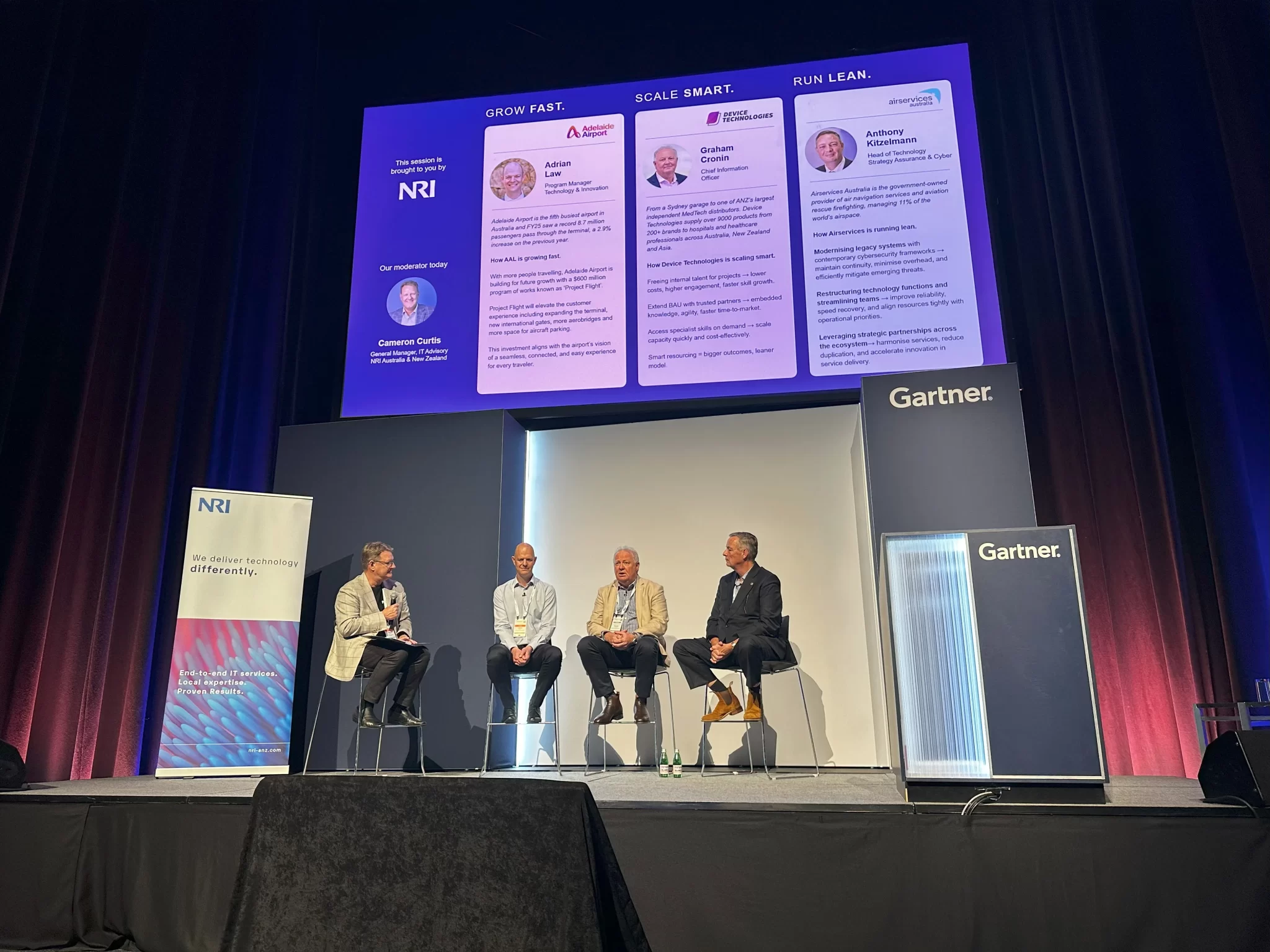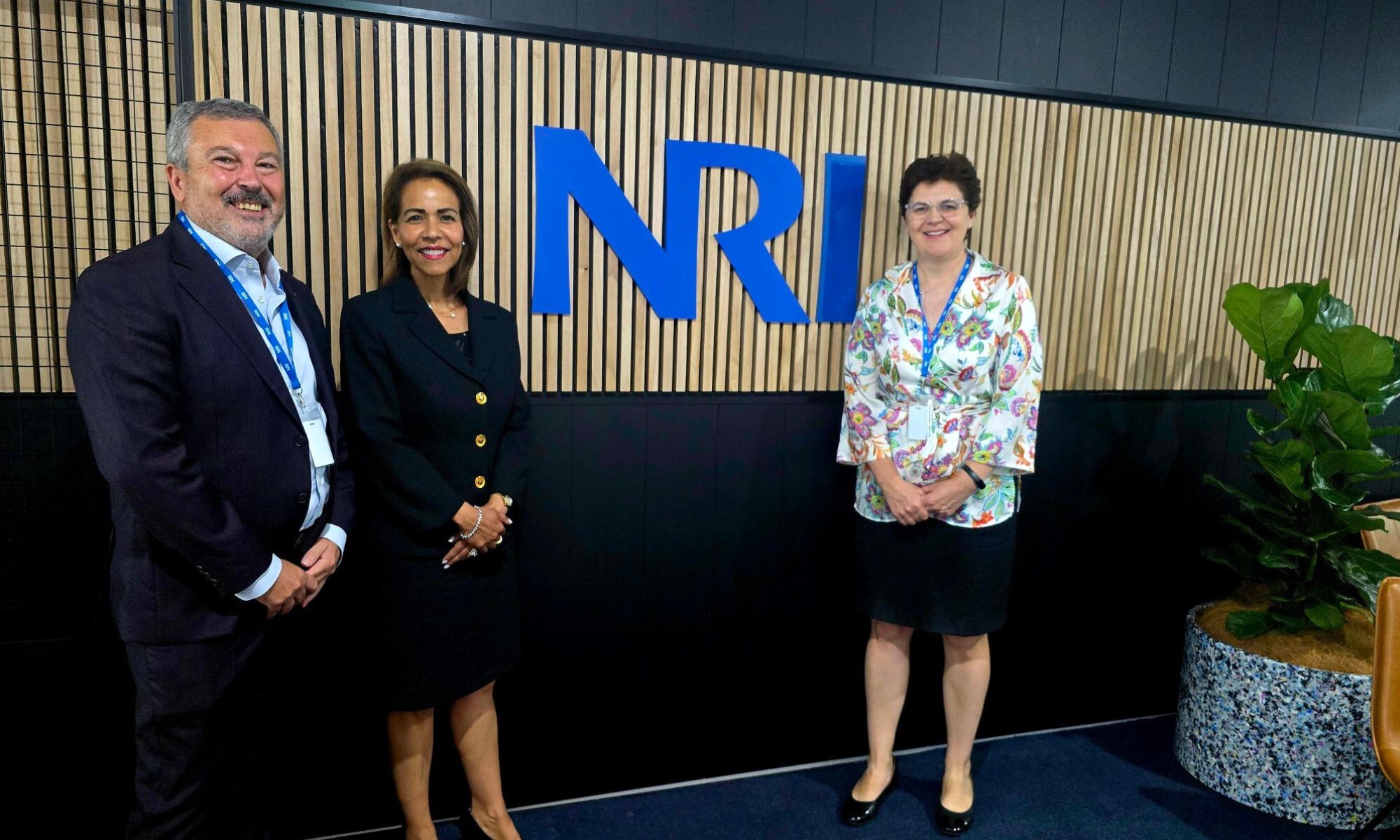Insights
Three Leaders, One Message at Gartner Symposium/Xpo™ 2025: It’s All About People
- Date 30 Sep 2025
- Filed under Insights

Technology, infrastructure, and process change often dominate the conversation around transformation. Yet as three leaders from aviation, healthcare, and government shared at a recent panel at the Gartner Symposium/Xpo™ 2025 on the Gold Coast, the real determinant of success is people. Whether the challenge is expanding rapidly, scaling through acquisitions, or running critical national infrastructure, transformation only endures when employees feel engaged, empowered, and respected.
Building fast: Adelaide Airport anchors growth in people and purpose
Adelaide Airport is in the midst of one of its most ambitious growth periods. Passenger numbers have already rebounded beyond pre-pandemic levels, fuelled by South Australia’s strong economy, low unemployment, and growth industries like defence, renewables, and education.
With expansion projects such as Project Flight — a terminal redevelopment featuring new baggage handling, screening, and car parking — and the Flight Junction logistics hub, the transformation is critical to meet demand.
Representing Adelaide Airport, Program Manager, Adrian Law, likened it to operating on “the brain, heart, and lungs simultaneously.” With the airport workforce doubling in just two years, and 1,800 new jobs expected from the logistics precinct, the scale of change is immense.
What’s striking is how people shaped the transformation’s genesis. It began not from the boardroom but from staff voices via the annual employee survey. Pain points raised by employees were grouped into projects and ultimately formed the backbone of a three-year business transformation programme.
Key people-focused practices include:
- Co-design and ownership: Workshops, prototyping, and early involvement of end users to ensure they help shape solutions.
- Change embedding: Leveraging executive assistants and change champions to drive adoption into business units.
Adaptive delivery: Adjusting the roadmap around operational realities, such as slowing projects during peak travel periods like 30 June. - Transparency and recognition: Making contributions visible and carving out moments to celebrate progress during a multi-year journey.
Challenges remain, particularly around cultural accountability. “Even when we deliver change really effectively, end users still need to make a choice to engage… it comes down to building a culture of accountability and doing the right thing.”
Adelaide Airport’s experience demonstrates that building fast is not just about physical infrastructure but creating the culture and structures for employees to embrace rapid, people-led change.
Scaling smart: Device Technologies redefines the workforce model
Healthcare is a sector where speed to market and scalability directly affect patient outcomes. Device Technologies — a distributor of more than 30,000 medical products across Australia, New Zealand, and Southeast Asia — is scaling rapidly, supported by private equity investment and recent acquisitions.
For CIO Graham Cronin, the challenge is balancing this growth agenda with limited internal resources. His remit covers everything from cyber security to warehousing and distribution — a span that demands agility, cost control, and the ability to retain intellectual property.
His answer was to rethink the workforce model. Rather than rely on short-term contractors — where knowledge inevitably walks out the door — he created long-term partnerships that serve as an “extension of teams.” These embedded partners provide continuity while the internal core team takes ownership of projects and engages directly with the business.
Key practices in Graham’s model include:
- Protecting IP: Reducing reliance on high-churn contractors to retain organisational knowledge.
- Career growth: Ensuring BAU staff aren’t sidelined by projects but instead gain development opportunities, keeping them engaged and invested.
- Flexible scaling: Using long-term embedded partners like NRI, to scale capacity up and down as market conditions demand, without destabilising the workforce.
- Cultural integration: Treating external partners as part of the organisation, with shared accountability for outcomes.
The impact has been powerful. “Projects are theirs. They’re not just watching contractors do the interesting work.” And when offshore teams were flown in, they demonstrated ownership by challenging decisions to ensure better outcomes. “They weren’t just doing the job; they felt like business owners.”
Scaling smart, for Graham, is about more than systems efficiency. It’s about creating people models where both internal teams and partners are empowered to act as one, accountable organisation.
Running lean: Airservices Australia balances safety, innovation, and respect
Airservices Australia manages 11% of the world’s airspace with just 5,000 staff across 187 sites. With $1.2–1.3 billion in annual revenue — funded almost entirely by airlines — the organisation is under constant pressure to deliver efficiency without compromising safety.
For Tony Kitzelmann, Head of Technology Strategy Assurance and Cyber, the challenge is to modernise critical platforms while respecting a workforce with deep institutional knowledge. Many employees have 20, 30, or even 40 years of tenure. “The mistake is thinking collaboration just happens. You need to acknowledge the history, contributions, and expertise of your people.”
His approach to running lean focuses on people in three dimensions:
- Respecting legacy expertise
“Good people do great things when they feel a sense of purpose and see how their past achievements link to the future.” Transformation is not a clean break from the past, but an evolution that honours decades of engineering discipline while encouraging new approaches. - Balancing safety with innovation
Projects like integrating civilian and military air traffic management — a world first — demand both continuity and change. Tony emphasised that risk cannot be eliminated without stifling innovation: “If you have zero risk, you never innovate.” The focus is on quantifying risk, using engineering discipline to measure and manage it, and helping people see the benefits. - Shifting focus to core strengths
Tony questioned whether running data centres and diesel generators was truly the business of Airservices. By moving toward cloud, virtualisation, and using specialised partners, the organisation can redeploy talent into safety-critical services where they add the most value. - Investing in people ahead of technology
On AI, Tony was pragmatic: it is the next natural enabler after cloud and virtualisation, but its adoption must be responsible. “Every dollar you spend on tech, you should spend three on training your people.” Lean operations mean amplifying human capability, not cutting it back.
His leadership advice was equally people-focused: “Don’t assume you’re the young pup who knows everything. Respect the decisions people made in the past — they were right for their time. Collaboration fails when you don’t acknowledge that history.”
For Tony, running lean means striking balance — between efficiency and safety, continuity and change, technology and people.
The common thread: Transformation with people, not to them
Across aviation, healthcare, and national infrastructure, the lessons converged. Transformation may be triggered by growth, competition, or technology shifts — but it is sustained by people.
- Adrian Law: Ground programmes in employee feedback and adapt delivery to culture and operational realities.
- Graham Cronin: Redesign workforce models so teams feel ownership, not displacement.
- Tony Kitzelmann: Balance innovation with respect for legacy expertise and invest in capability as much as technology.
As NRI’s panel moderator, Cameron Curtis, concluded: “Even for organisations that run aeroplanes, tarmacs, and medical instruments, people remain the most precious asset.”
In an era where industries are racing to modernise, these leaders offer a simple but powerful reminder: transformation succeeds when it’s done with people, not to them.




